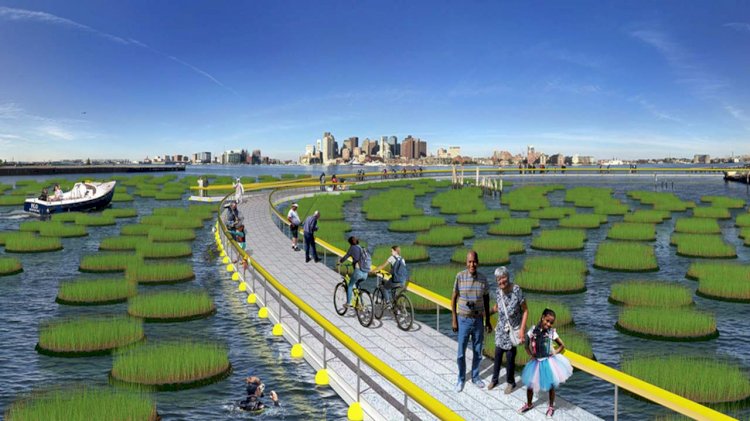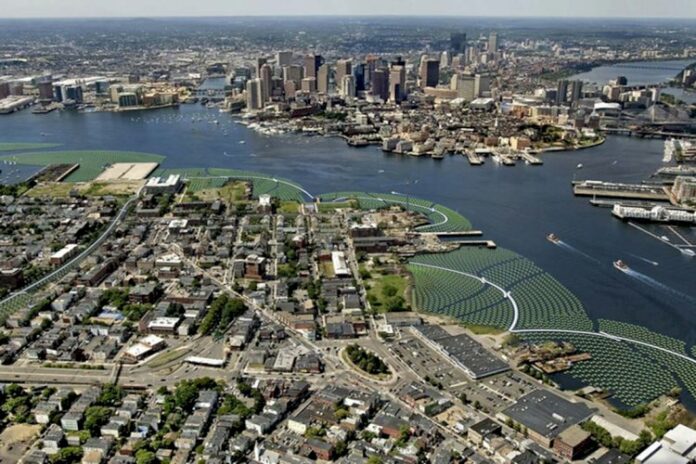The Emerald Tutu began as a simple idea for a new kind of coastal protection system to address flood risk in Boston — and as a commentary on the urban history of the city.
Gabriel Cira ’08, CEO of The Emerald Tutu, Inc., says:
“To address the true danger of climate change in Boston, we wanted to focus on making infrastructure green, inhabitable, and accessible, rather than reinforcing the division and erasure that Boston’s major infrastructure initiatives of the 20th century brought.”
The U.S. National Science Foundation agreed, as they recently announced the award of a $256,000 research grant to help The Emerald Tutu realize their vision.
Deployed in Boston Harbor, the Emerald Tutu would be an interlinking array of fibrous floating mats loaded with biomatter that flank the waterfront areas of the city, reducing surge and waves from threatening storm events that are supercharged by climate change. Individual mats grow to be massive waterlogged units, with semi-aquatic marsh grass above and aquatic seaweeds attached below.
As an interconnected system, they absorb and transfer energy through the network, acting to disrupt large incoming waves, and the submerged biomatter impedes the inland rush of atmospheric pressure-driven tides known as storm surge. These factors add up to reduced inland flooding during storms, while creating a unique inhabitable public waterfront amenity during fairer weather. Channels and gaps between units allow navigation by all kinds of seafaring vessels, and the Emerald Tutu can safely avoid shipping lanes for Boston’s active container port and its other big-berth docks.

But the greatest parts of the Emerald Tutu are the materials it does not use. It manages to solve the question of coastal climate resilience in cities without reliance on traditional infrastructure, sometimes known as “gray infrastructure,” made of massive concrete and steel — which are carbon-intensive and do not result in human-friendly environments. Gray infrastructure projects tend to be extremely expensive, and take years to construct.
The Emerald Tutu also avoids any onshore modifications, such as berms or ditches, which are impracticable in densely-populated urban areas like Boston Harbor. And unlike gray infrastructure solutions such as seawalls or seagates, which have been shown to devastate water ecology, the Emerald Tutu does not block the normal flow of water in and out of the harbor. Instead, it adds back the marsh flora that existed before all the land infill of Boston, and improves water quality through bioremediation and nutrient stabilization.
Floating pathways lace through the design, providing a path for people to walk this new landscape — actually a restoration of the old marsh ecology of Boston Harbor.
As the Emerald Tutu is comprised of a simple set of modular parts, meant to be easily deployable, expandable, and reparable over time, the new NSF grant will allow the team to prototype and test those parts. The aim is to create a system that is easily manufacturable and deployable at the quantity needed — thousands of units — and that can withstand conditions of the harbor.



